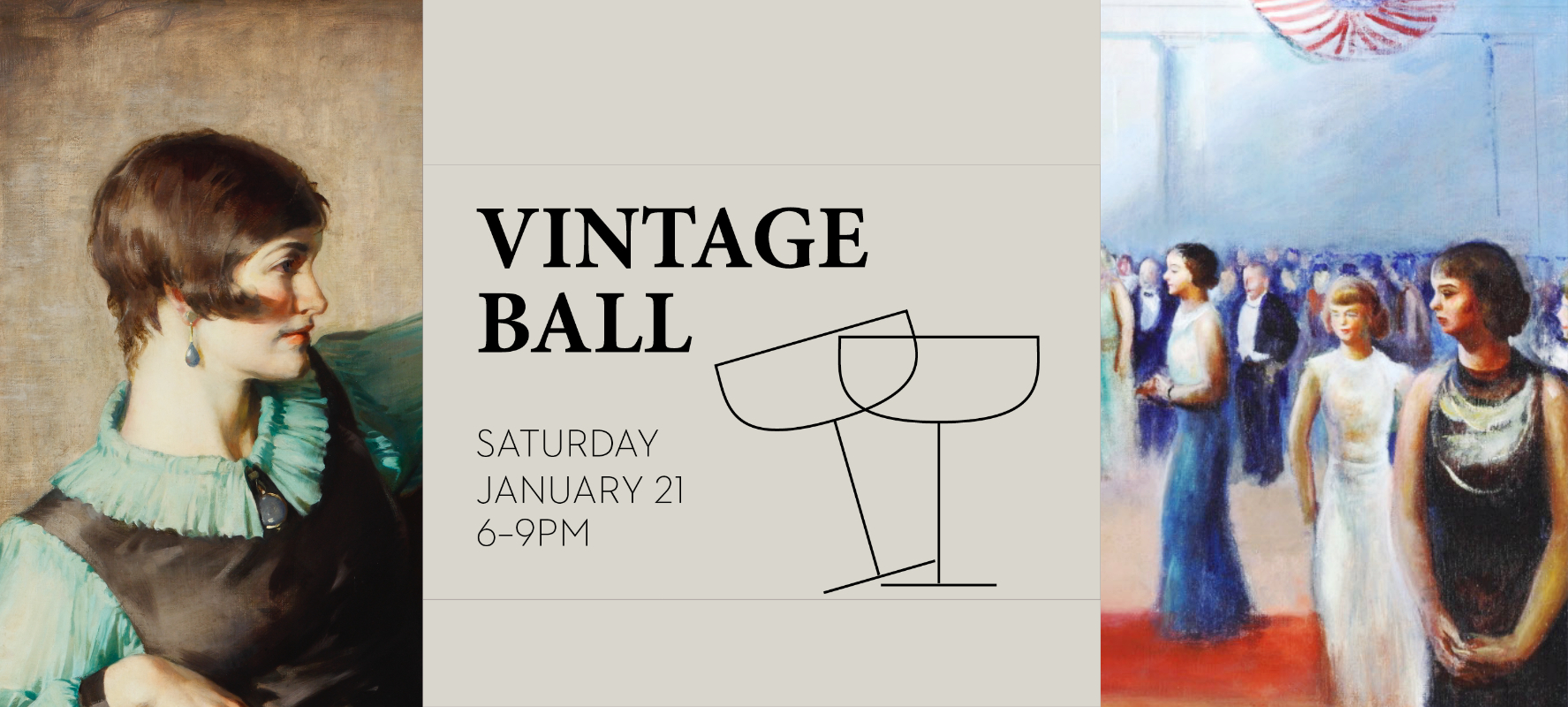Vintage Ball Outfit Inspiration
“And I like large parties. They’re so intimate. At small parties there isn’t any privacy.”
F. Scott Fitzgerald, The Great Gatsby
We agree! Join us at the Vintage Ball, on January 21, 6-9 pm, at The Westmoreland Museum of American Art! This speakeasy experience, inspired by the era of Gatecrashers: The Rise of the Self-Taught Artist in America, will include music by the Gatsby Gang Jazz Band, dancing, immersive entertainment, heavy hors d’oeuvres, and of course, themed libations!
We encourage you to dress in your most festive, vintage, or vintage-inspired frocks of any period! Need some inspiration? Keep reading to find out the fashion trends of the ’20s, ’30s, and ’40s!
The 1920s
The 1920s were nicknamed the Roaring Twenties, allegedly due to the new less-inhibited lifestyle people embraced.
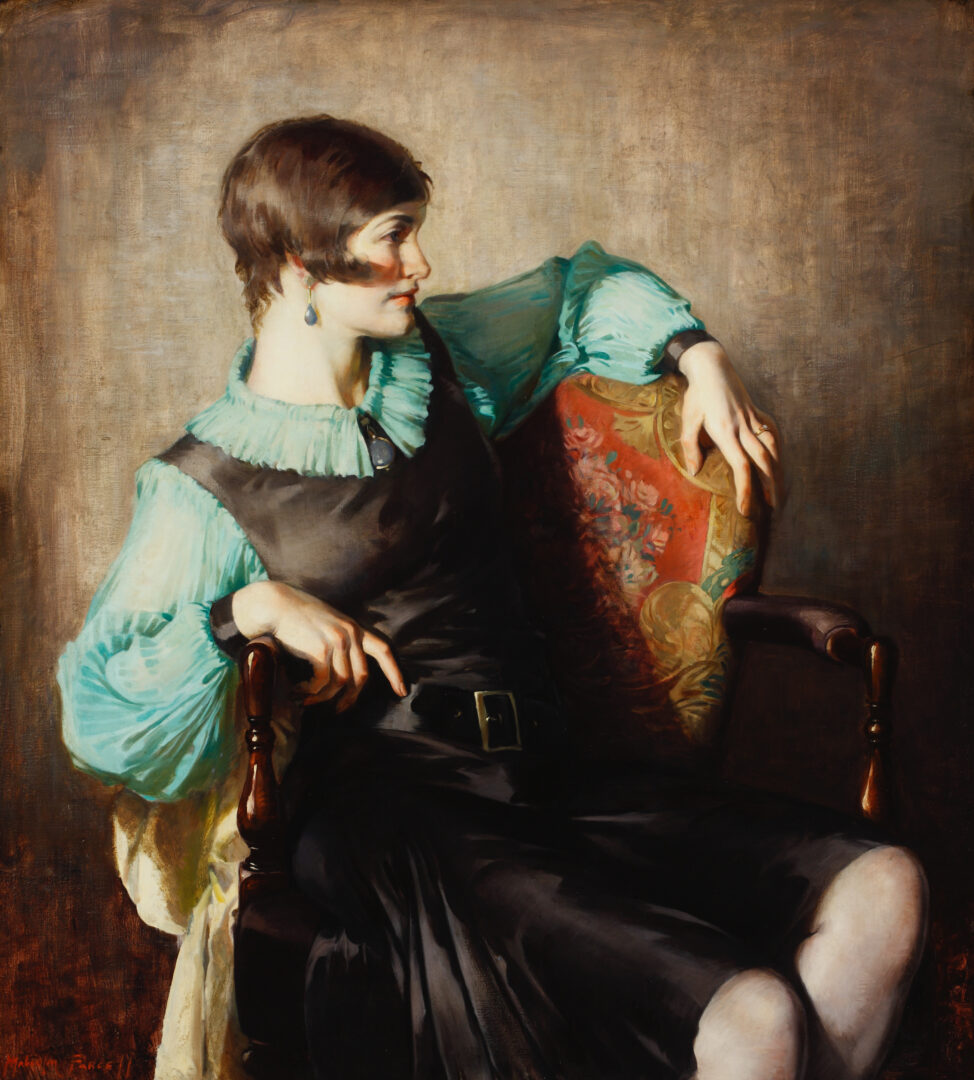
During the decade, there was economic prosperity, technological and cultural advancement, urbanism, and modernism, but there was also social change and unrest. Particularly, it was an era of liberation for women, with women winning the right to vote and entering the workforce.
The most popular and perhaps most iconic look remembered from this decade is that of the flapper. The look consisted of a sack-like dress with a dropped waist and a rising hemline accompanied by a cloche hat.
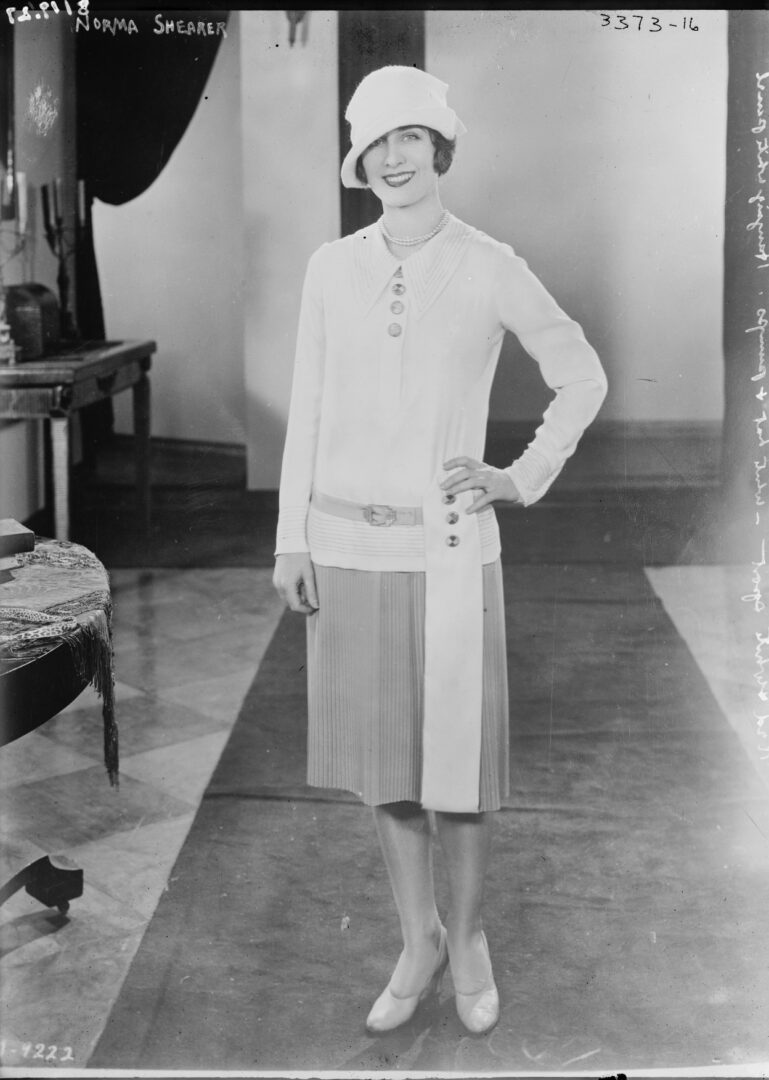
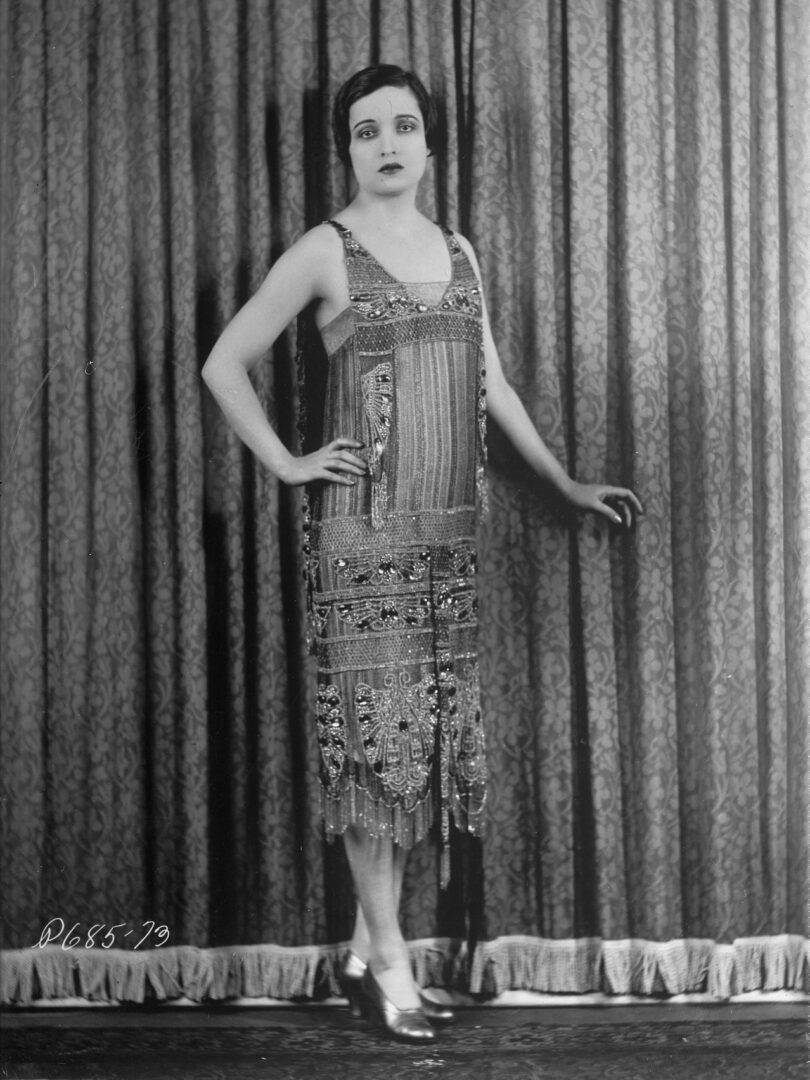
Eveningwear sometimes still reached floor length, but typically consisted of the same simple flapper silhouette and style but embellished with ornate beadwork, sequins, and embroidery like the dress pictured above on the right. Looking for a flapper-style dress for the Vintage Ball? We suggest looking at Retro Stage’s 1920s dress selection!
Menswear consisted of soft collars, like the one featured in Samuel Rosenberg’s Portrait of Erik, and one or two-button suits without a waistcoat. One popular style was pinstripes and popular materials were tweeds and flannels.
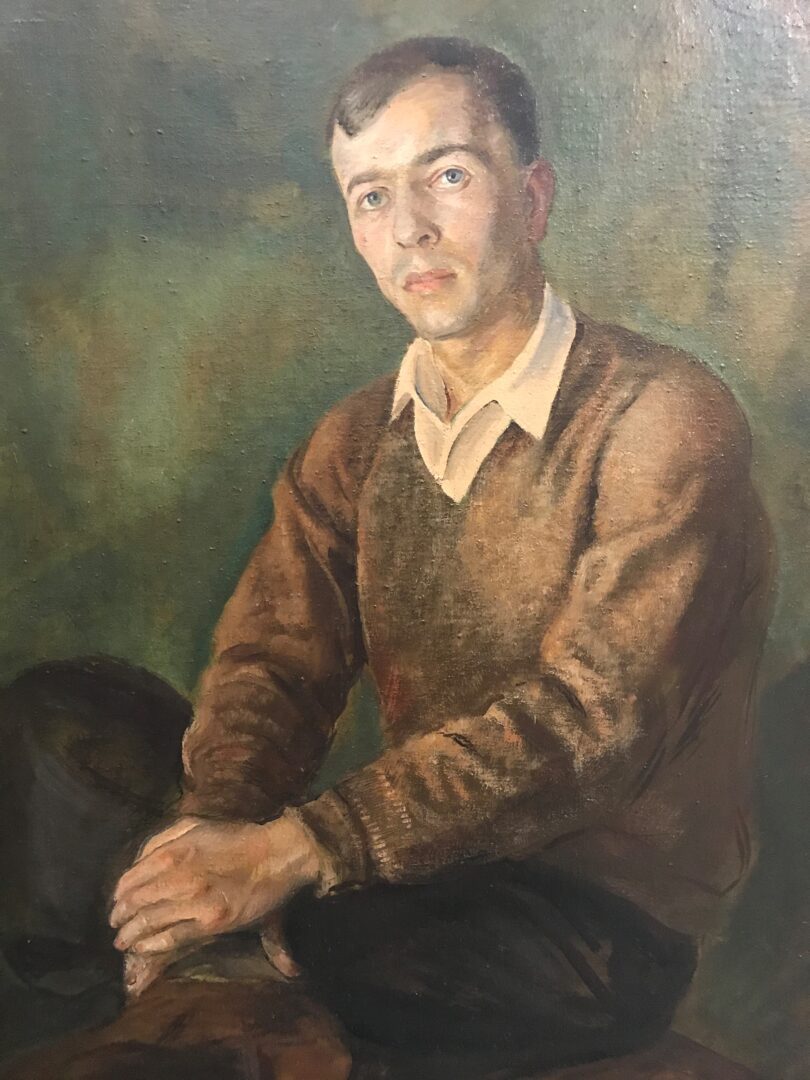
The 1930s
Mention the 1930s and one of the first things someone will mention is the Great Depression, which drastically affected the American economy, resulting in widespread poverty. Interestingly enough, the American film industry experienced a boom due to men and women flocking to the cinema as a form of escape from the hardships of the depression. Increasingly, men and women turned to movie stars for fashion inspiration during this period, and although people had significantly less money, there was still an interest in being fashionable.
The fashion of the 1930s featured a return to conservatism with dress hemlines lowering back to the ankle and floor while waistlines returned to the natural waist area. Simple lines remained though, and dresses became more fitted, hugging the body to create a more curvy silhouette. Another important symbol of the decade was that of the exaggerated shoulder, on suits or dresses.
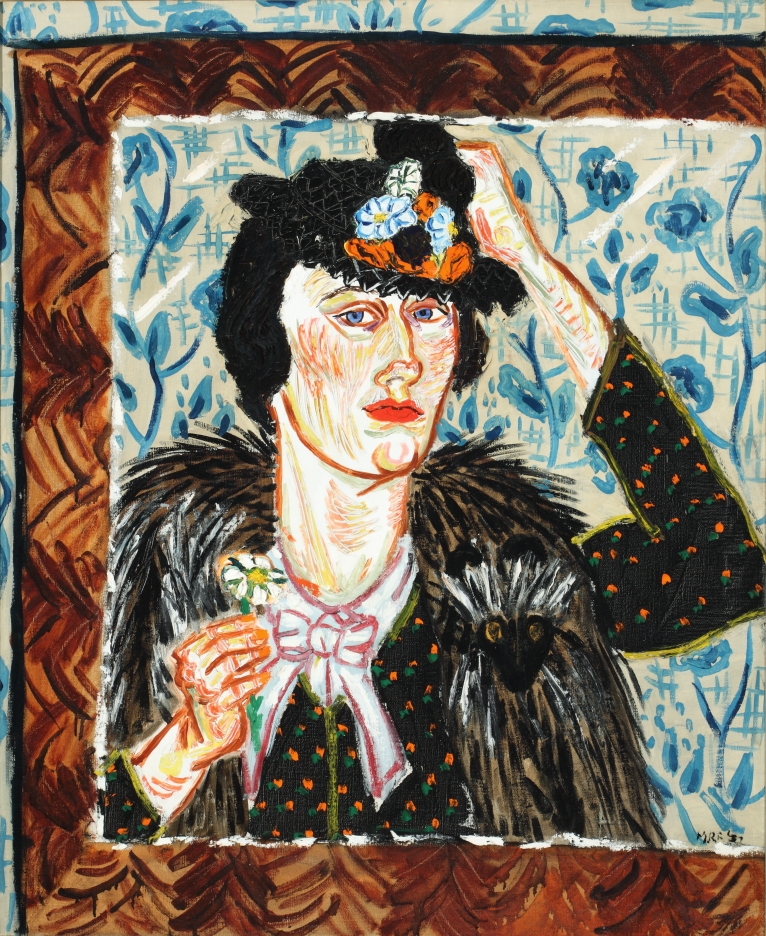
Day dresses had defined waists with lengths falling between the mid-calf and above the ankle. These dresses were available in various patterns, floral, plaid, dots, and more abstract prints, which could have been similar to the pattern found on the dress that Mary Regensburg Feist’s “Self-Portrait” (1937) is wearing.
Menswear further shifted from elitist, formal attire to reflecting working-class heroes of the movies. Daywear consisted of knitted sweaters and soft-collared shirts as well as sportswear comprising sports jackets and blazers with flannel trousers and open-necked styles. Although daywear became more casual, suits or tuxedos were still worn on formal occasions.

Thinking a floor-length bias cut gown or tuxedo may be the perfect look for the Vintage Ball? Check out Guy Pene DuBois’ The Rose Madder Club (1934) bwhich depicts a formal occasion with the women in body-skimming floor-length dresses and the men in black tuxedos for inspiration.
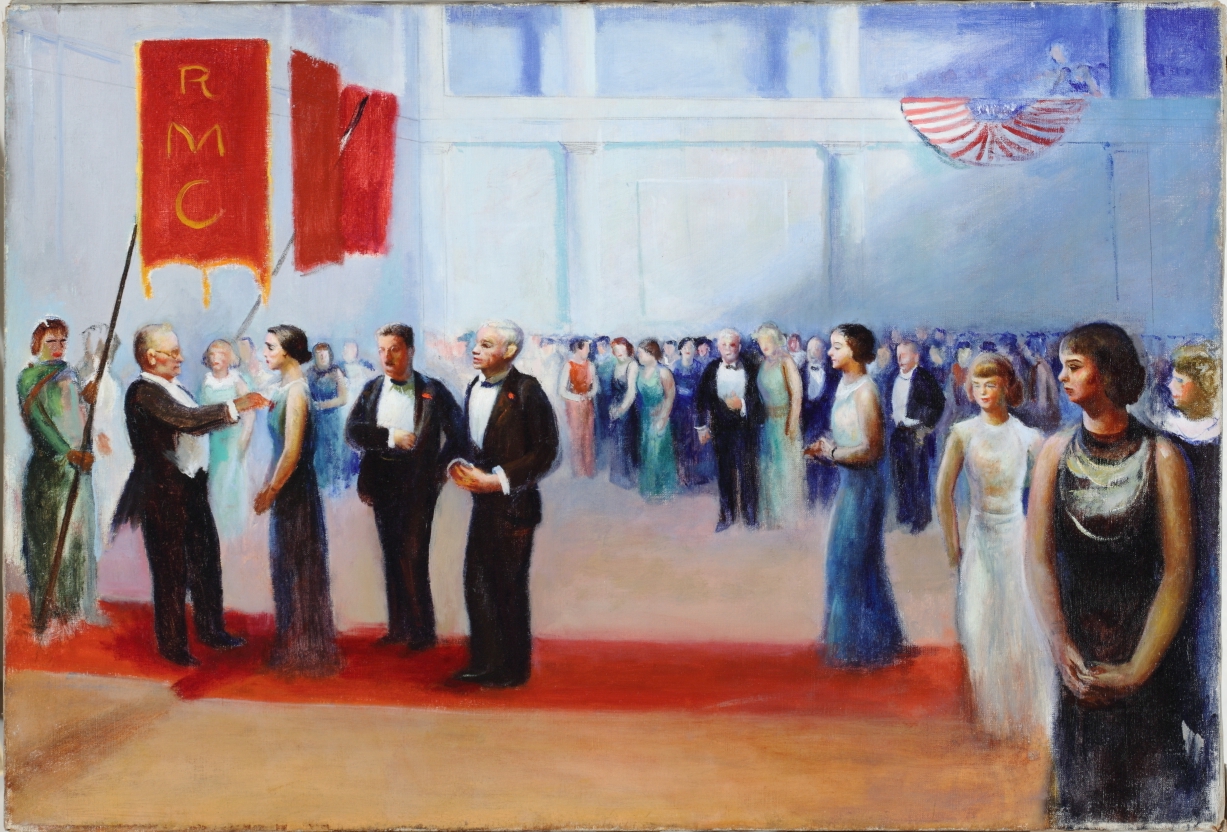
The 1940s
The 1940s were dominated by World War II and the war drastically impacted fashion. France was the world’s fashion capital, but halfway through 1940 German forces occupied Paris, effectively cutting off France from the United States. While some designers had fled Paris, most stayed and their designs stayed with them.
Left to their own devices and designs, U.S. fashion differed greatly from what other European countries were wearing. While fuller skirts were still popular in France, the silhouettes in the United States featured a slimmer A-line.
Rationing also impacted fashion with utility clothing which incorporated simple lines with boxy or rounded collars, padded shoulders, nipped-in waists, and hemlines below the knee, available for purchase with ration coupons. Tweeds and plaids continued to be popular as well as bright colors and patterns in utilitarian pieces.
Utility and non-Utility designs had similar lines with padded shoulders, nipped-in waist and hemlines just below the knee. [Left image: Detroit Evening Times (Detroit, MI), May 25, 1944 ; right image: Evening Star(Washington, DC), September 15, 1943.]
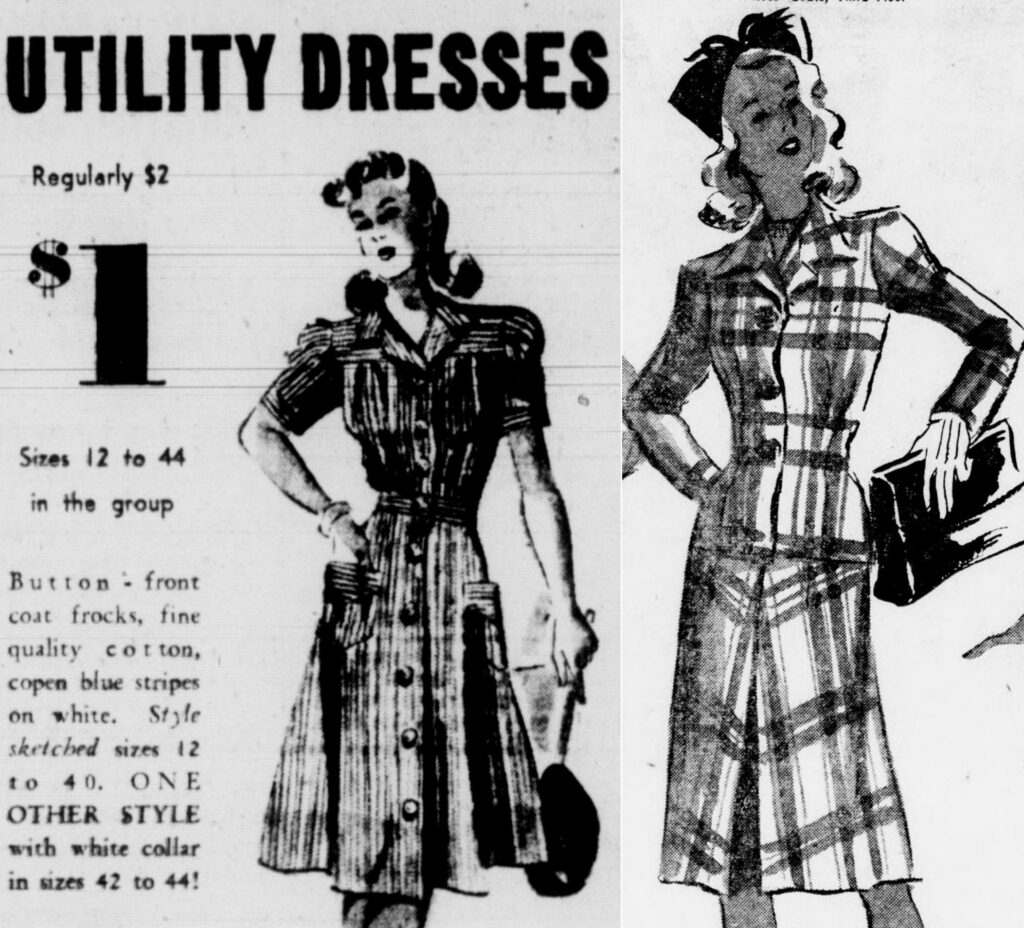
The War ended in 1945 and utility clothing quickly fell to the wayside with Christian Dior’s “The New Look” launch in February 1947. “The New Look” was an evolution of pre-war styles and characterized by rounded shoulders, a cinched-in waist, and a long, full skirt, and an example of this style can be viewed in the third outfit below below.
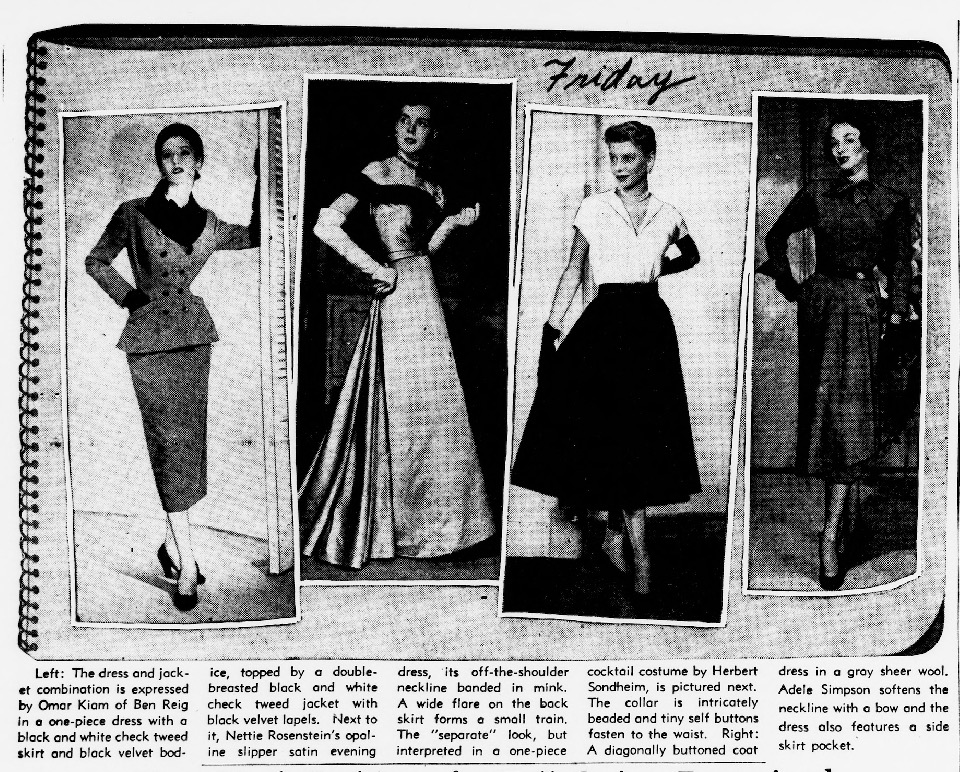
Menswear fashions also stalled out due to the war and men were seen in uniform more than out of uniform. Men’s styles remained very much the same as in the 1930s for the first half of the 1940s with men’s utility clothing slightly changing to accommodate the use of less material. One style that arose in 1943 was the Zoot Suit, a suit featuring broadened jacket shoulders, extended jacket length, cinched trouser waists, and peg-leg paints. This style evolved from the “drape” suits popular in Harlem dance halls in the 1930s, and by the early 1940s, this style was primarily worn by minority men in working-class neighborhoods across the country.
Need even more inspiration? Browse The Met’s Costume Institute’s collection featuring more than thirty-three thousand objects representing seven centuries of fashionable dress and accessories for men, women, and children, from the fifteenth century to the present.
Hopefully, this quick overview of a few of the iconic fashion trends of the ‘20s, ‘30s, and ‘40s inspired you to wear a vintage look to our upcoming Vintage Ball on January 21, 6-9pm!
Still not sure what to wear or where to start? Let Song of Sixpence, a boutique in Ligonier carrying a selection of Junie Moon Vintage, create a fantastic vintage ensemble for you or visit Route 30 Retro, located in Jeanette, to find some unique vintage pieces!
So, start planning your vintage look and get your tickets today to the Vintage Ball!
